FORT BLISS, Texas - Training is the number one priority for the Army and its Soldiers. It has been proven the success of missions at home and abroad depend on training that is realistic and challenging. The focus of the Medical Simulation Training Center at Fort Bliss, Texas, is an integrated approach to the Combat Lifesaver Program that blends basic medical lifesaving skills with soldiering skills.
"Anybody can be taught to treat a casualty, but to treat a casualty in a hostile environment is the real focus," said David Bustillos, an instructor at the MSTC for two years.
In order for Soldiers to be CLS certified through the MSTC, they must pass a written exam and complete either the outdoor or indoor validation course. Each course presents unique challenges for Soldiers to overcome and requires both situational awareness and teamwork in addition to the medical knowledge gained during the classroom portion.
The validation portion of CLS requires Soldiers to be engaged, said Bustillos, a former Navy corpsman. He said the Soldiers have to consider if they are in a safe place to treat a casualty, whether they have cover and concealment and what their medical evacuation window is.
There are four validation rooms inside the MSTC. Once the exercise begins, the room is dark and filled with smoke. Casualties and assorted fake limbs are strewn on the floor. A team of Soldiers enter the room and is supervised through a two-way mirror by course instructors. If the Soldiers fail to provide proper security, they can become casualties themselves or lose possession of their simulated weapons.
Bustillos said one of the biggest mistakes Soldiers make is trying to identify an injury by sight. The indoor validation rooms severely hinder the sense of sight which forces the Soldiers to put their hands on a casualty, leading to a better assessment.
"A lot of the dummies had more than one injury, which is something you see on the battlefield. Especially from IED blasts," said Spc. Bryan Cools, 125th Brigade Support Battalion. Cools deployed to Iraq in 2004 and 2007.
"You learned quickly to check for everything," said Cools.
The indoor validation portion utilizes interactive mannequins that bleed, breathe and respond to the treatment provided by Soldiers. If treatment is incorrect or untimely, the mannequin will die and the scenario is terminated.
Use of "medi-mannequins" allows Soldiers to become familiar with what they are doing wrong and correct it before having to use the skills on the battlefield, said Bustillos.
"The training aids are a lot more life-like," said Pvt. Brian Mayo, 3rd Brigade Combat Team, 1st Armored Division. Mayo recently graduated from One-Station Unit Training at Fort Sill, Okla., and Fort Bliss is his first duty station. "At Sill, the drill sergeants would have you treat imaginary wounds."
Mayo said the most difficult part was the outdoor course; specifically, executing tactical movement while carrying the injured on litters to the helicopter for evacuation.
In an attached lot, the outdoor course has been created to replicate a downrange mission scenario. A nine-man team of Soldiers must successfully navigate around barbed wire barriers, blown-out vehicles and blind-corners while being engaged by a hostile firing paintballs. Casualties in this course are other Soldiers from the course with simulated wounds. The challenge is to find, treat and move several casualties to the evacuation point within a pre-set time limit.
Statistically, if an IED strikes a convoy there will be one to five casualties, said Bustillos. The primary responsibility of the combat medic is to focus on the most severely injured casualties. Being able to rely on CLS-trained Soldiers is going to make the biggest difference between someone coming home and someone not.
"I have Soldiers come back and say, 'thank you, I had to use this downrange and it helped,'" said Bustillos.
Soldiers are required to recertify CLS skills annually. Bustillos recommends that units incorporate CLS training on a monthly basis to keep Soldiers familiar and comfortable with the equipment and tactics taught at the MSTC.
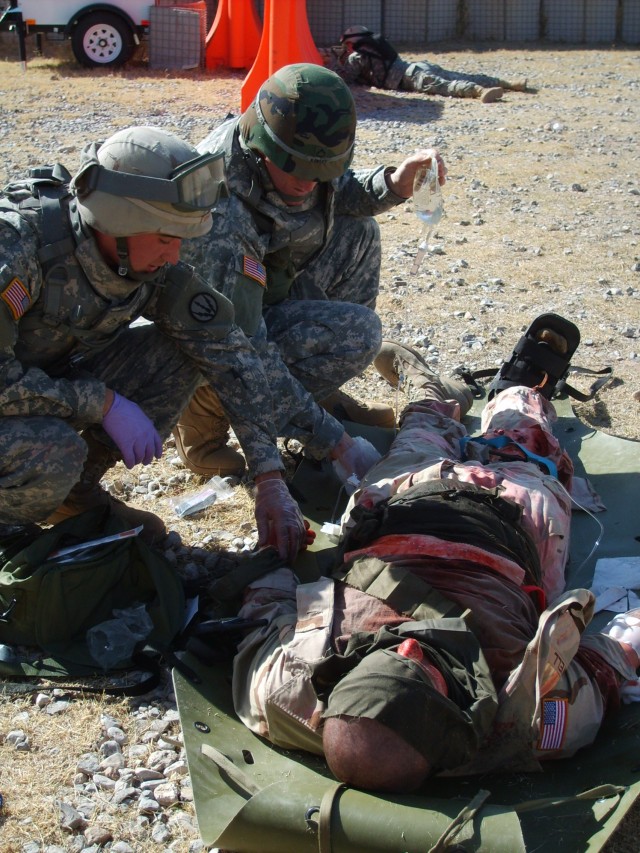
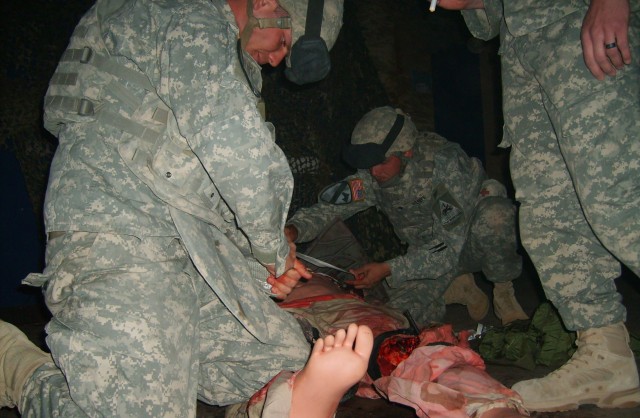
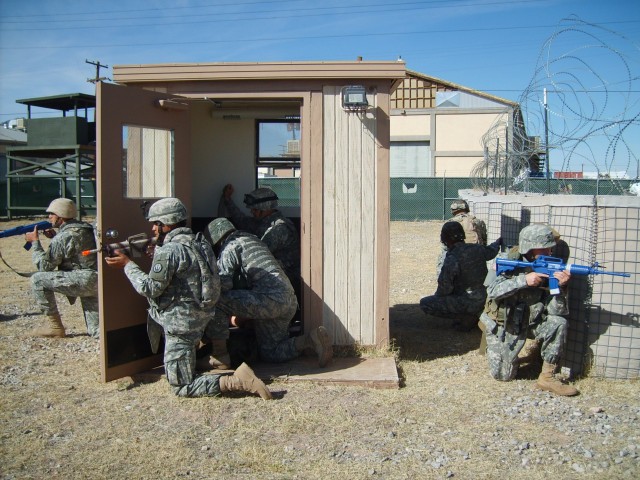
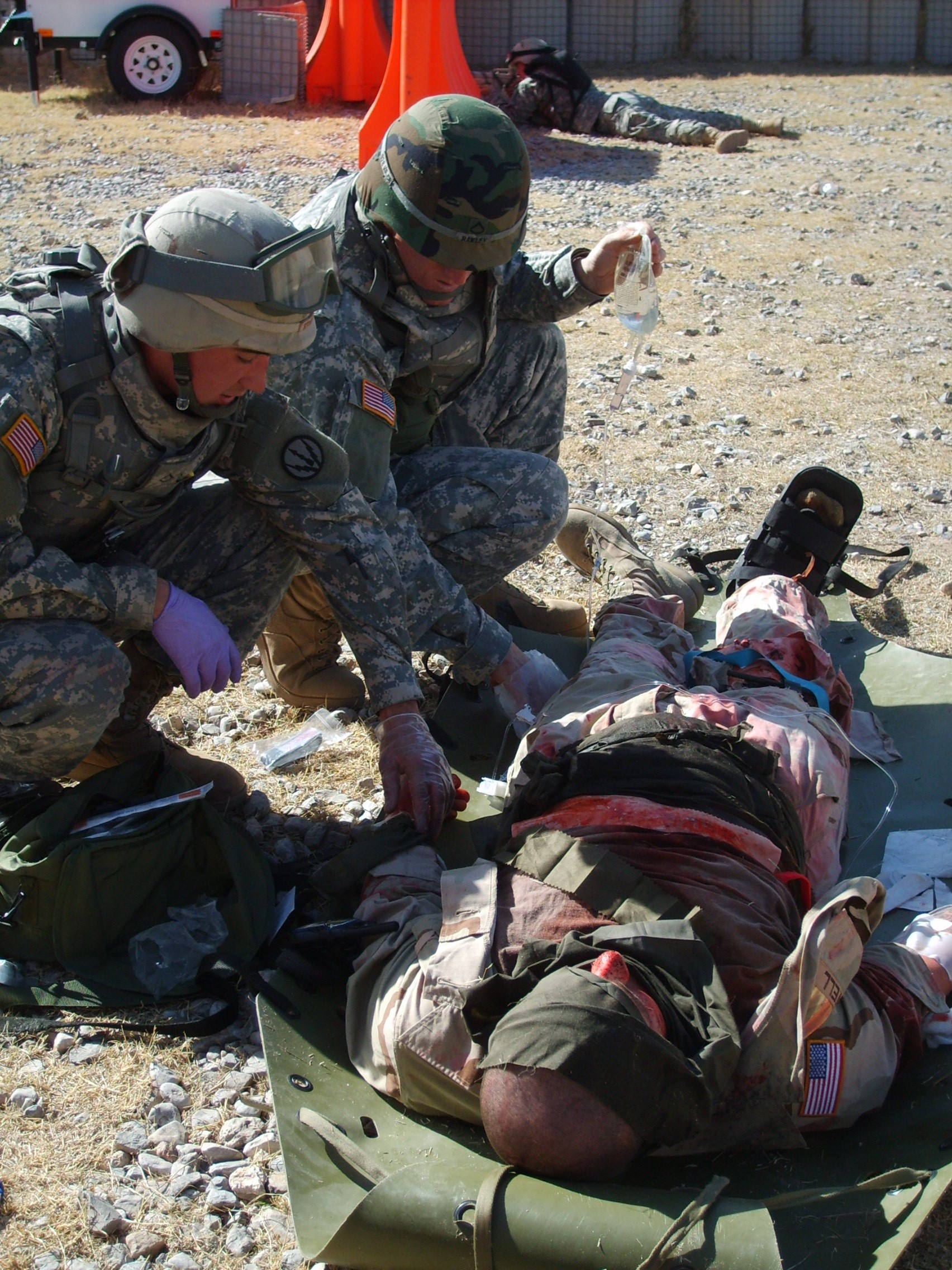
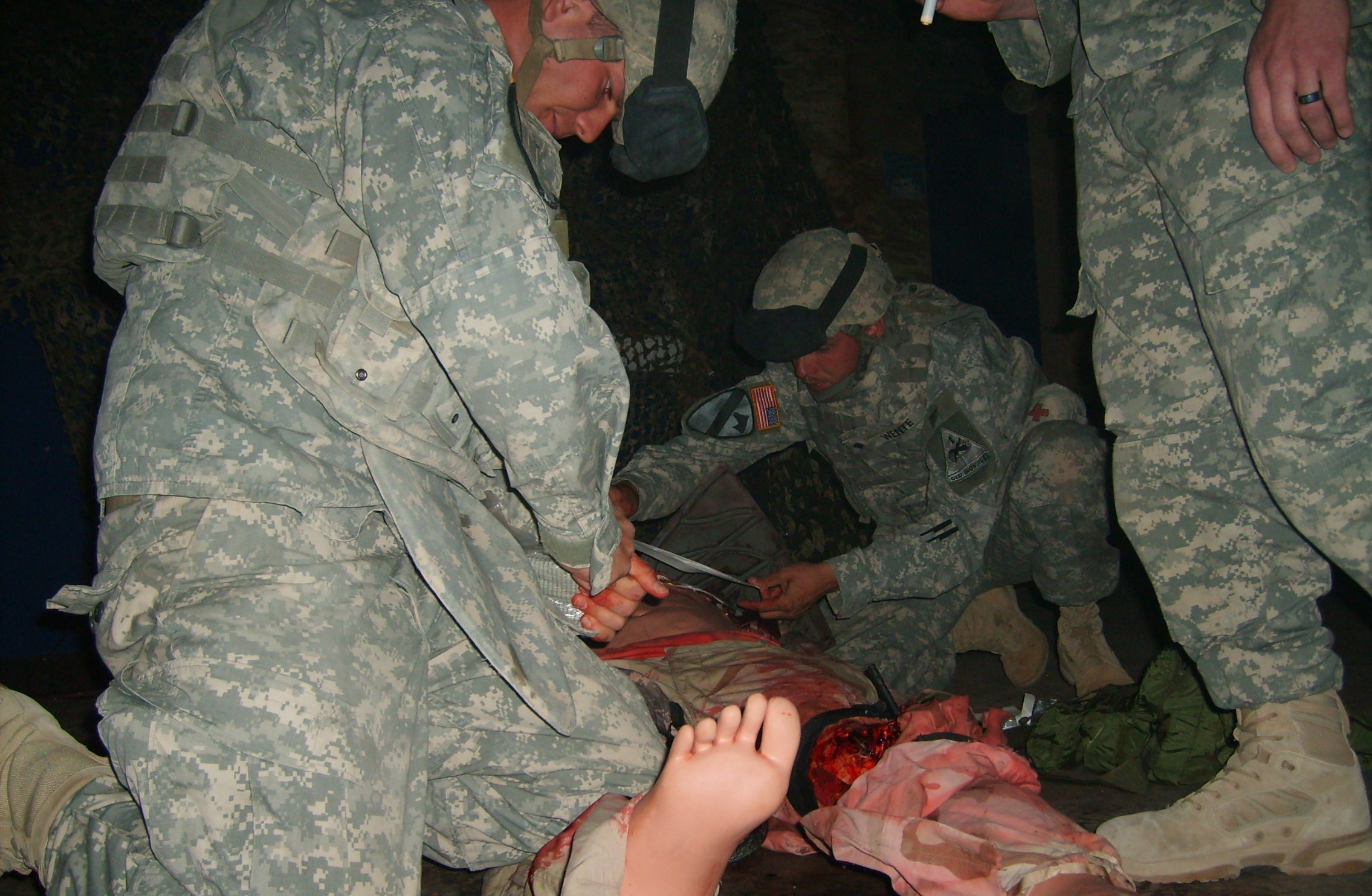
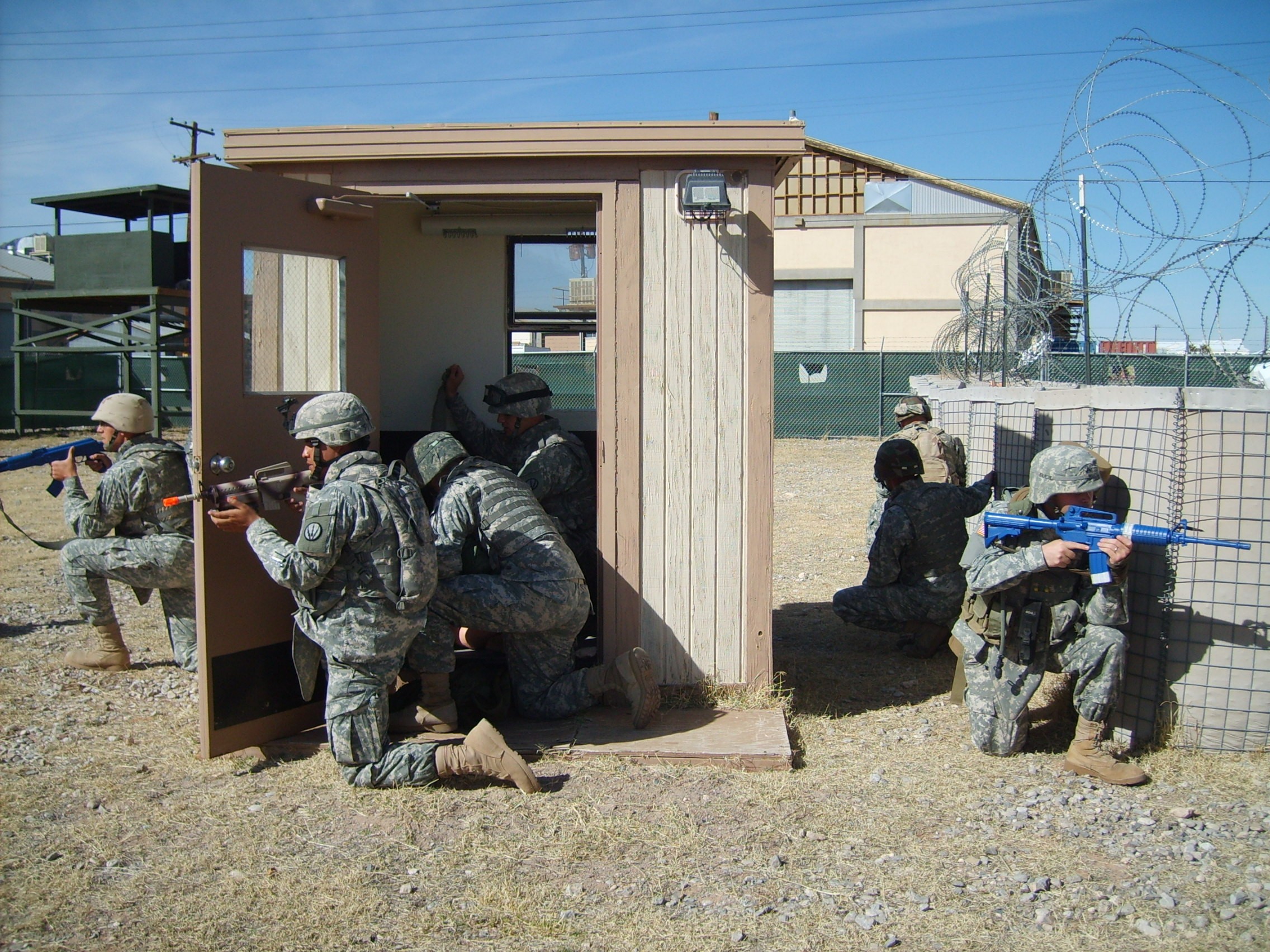
Social Sharing